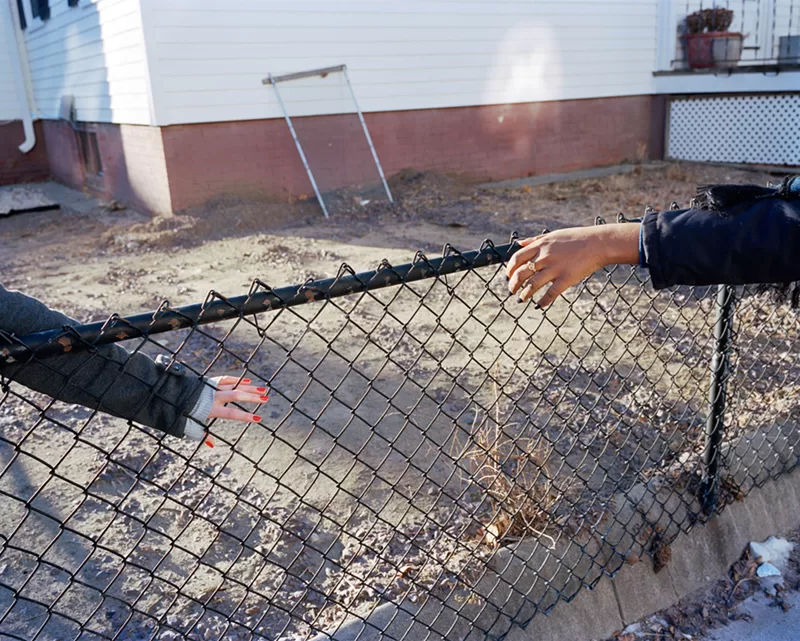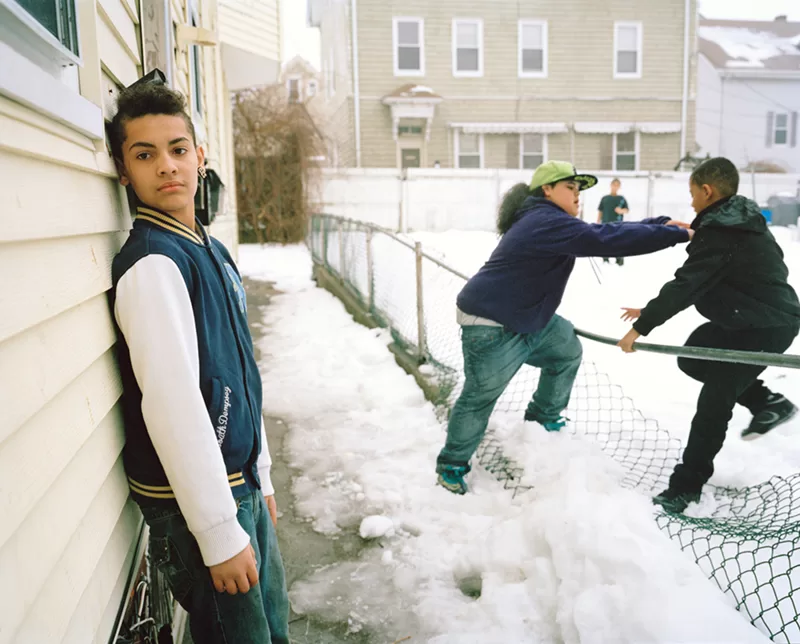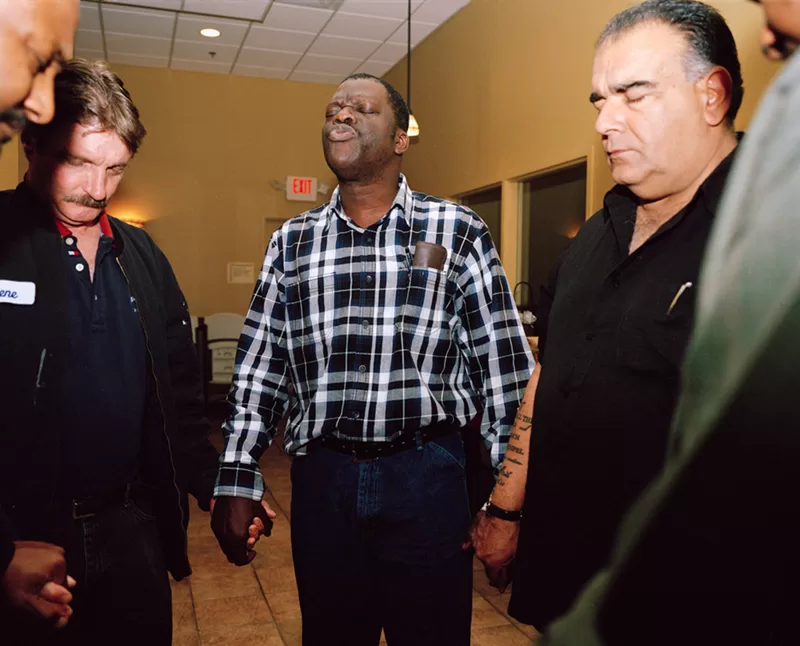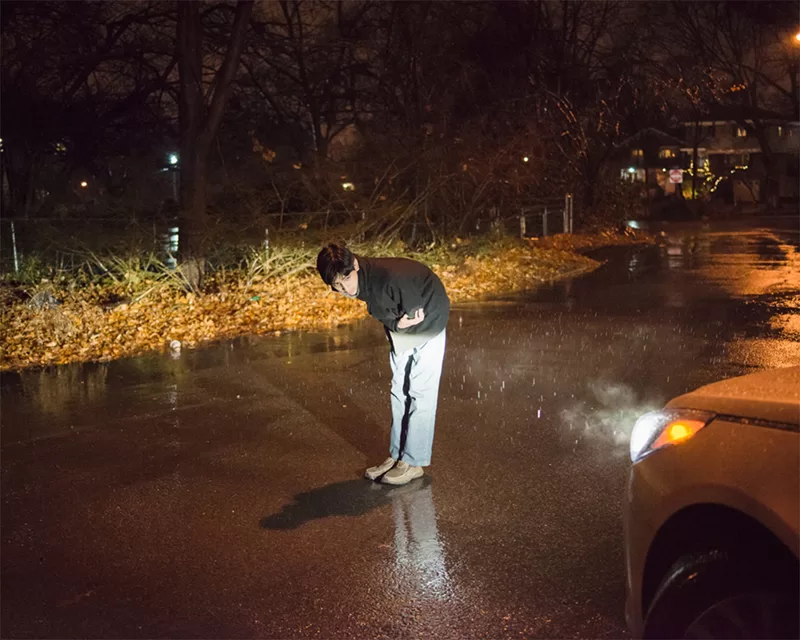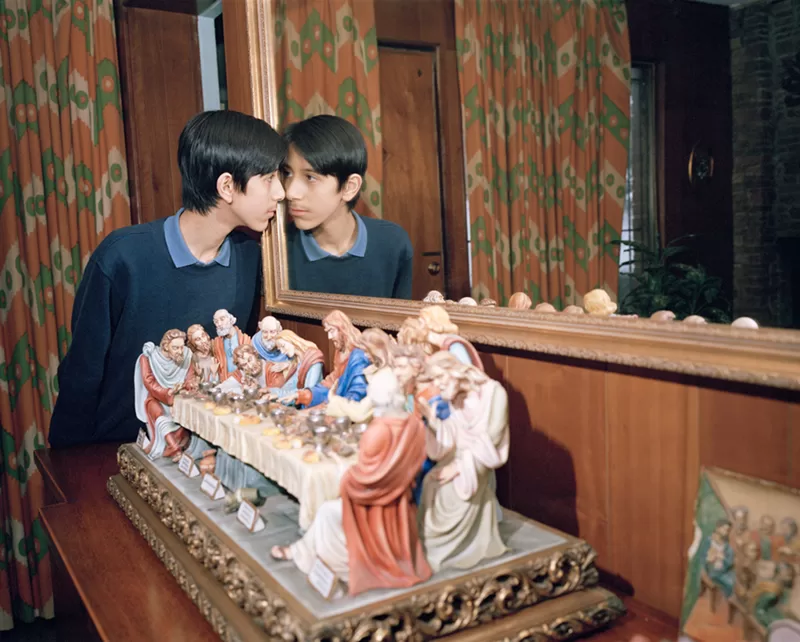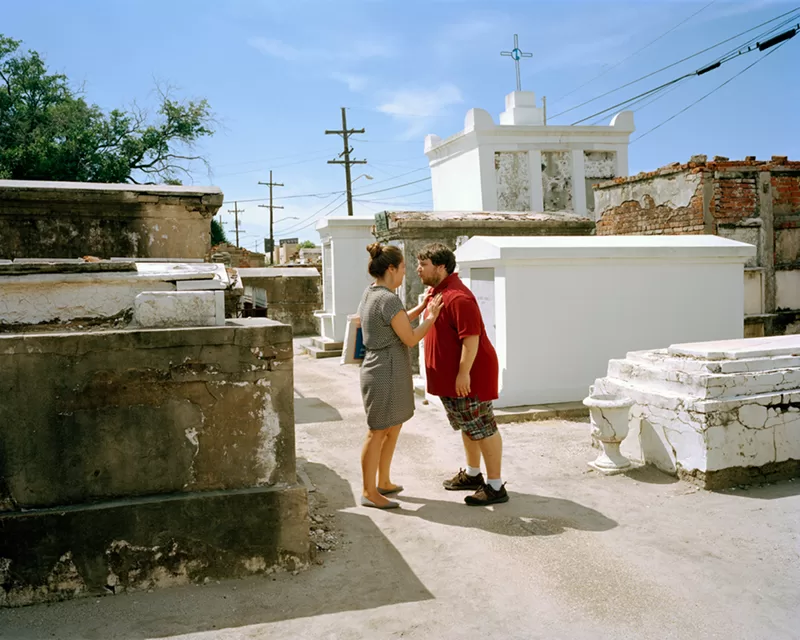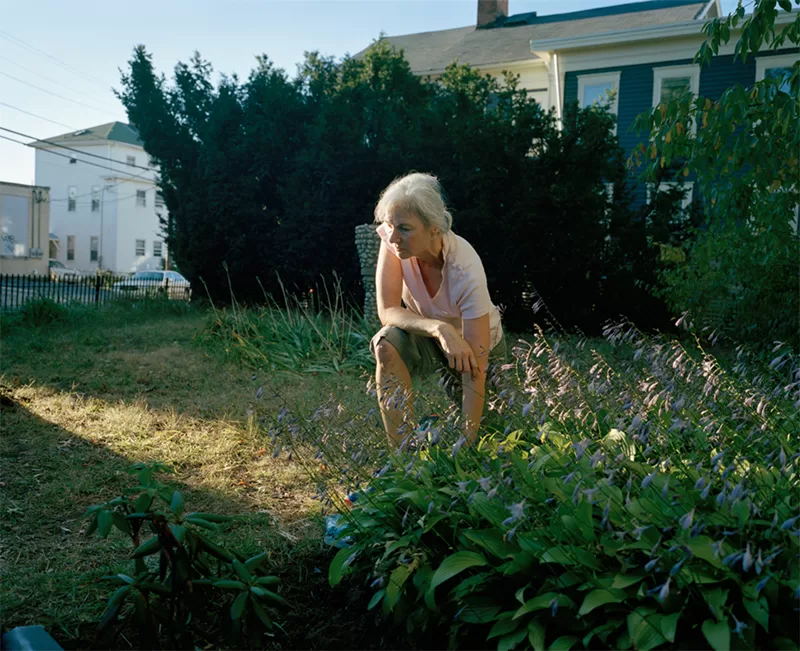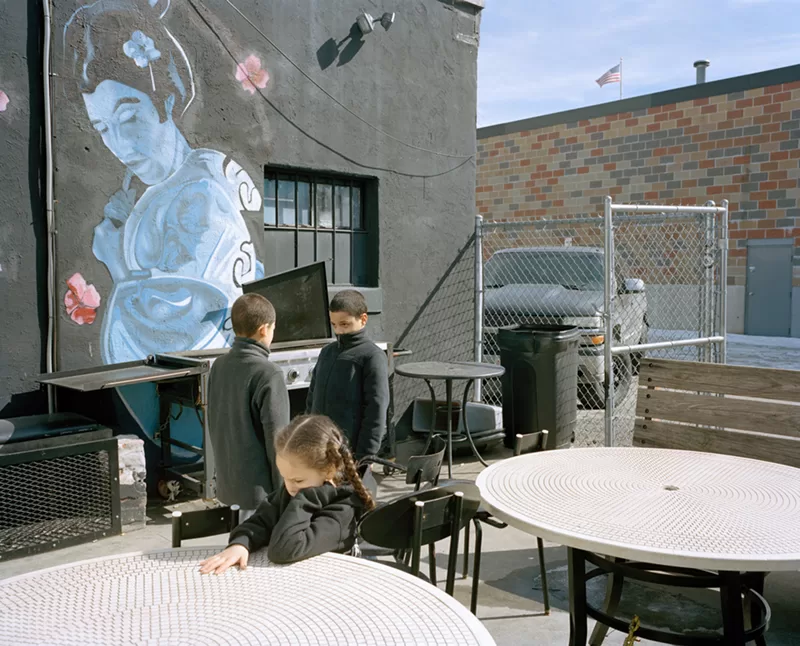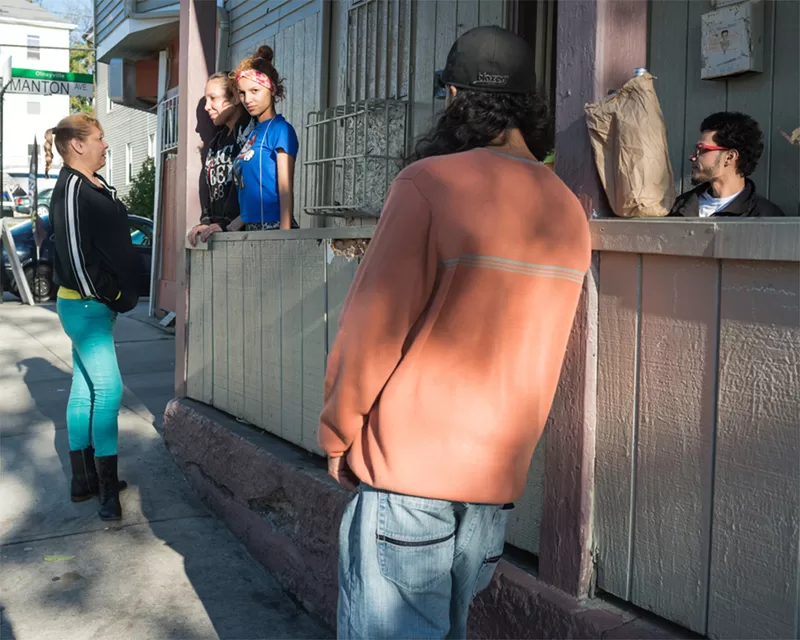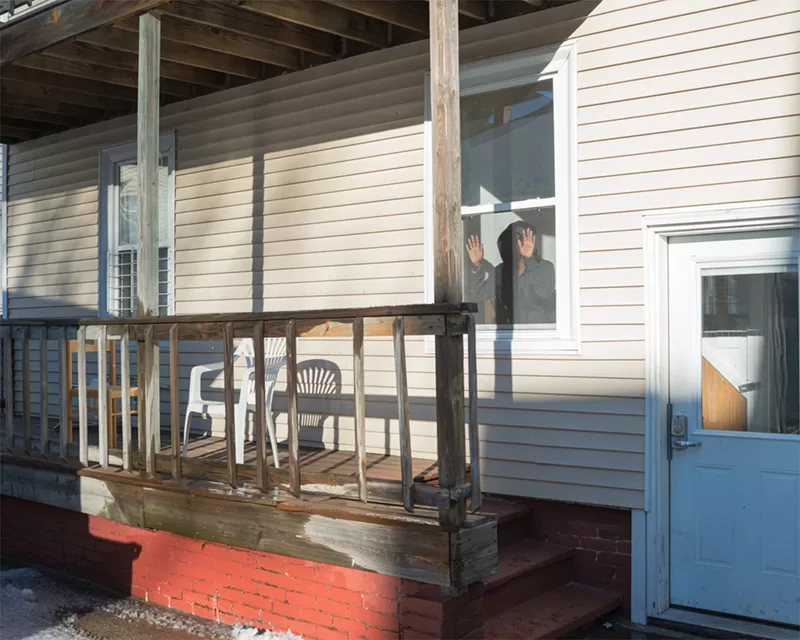Paolo Morales – Looking Back
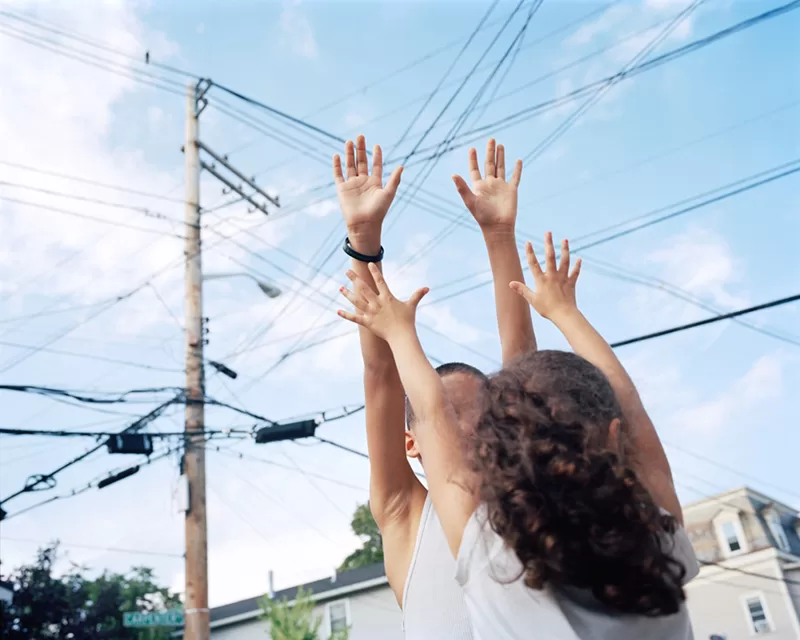
The way we relate to one another is the product of many different factors; more precisely, we should say the ways of relating, because these relations are changeable and constantly open to revision. They are negotiated territories. What is more, such relations – how people share lives and spaces – will depend on the histories of those involved, as well as the social context of the relationship, because the two are largely inseparable. In some situations a single code of behaviour predominates, but in others there will be many, so each relationship opens out into a complex pattern of connection and belonging; these are the patterns that shape our lives and in turn define the character of those relations we can potentially enter into. We are the sum of our relationships, whatever form they might take. The photographs that Paolo Morales makes are all about the spaces between people and the spaces they inhabit together; he traces – but does not explain – how we relate to one another, with all the vulnerabilities and aggressiveness that this can entail. His work occupies an ambiguous position somewhere between portraiture and documentation that feels both astutely contemporary (in terms of photography as a medium) and emotionally rich.
At the same time, perhaps the key relationship in the pictures that make up his series These Days I feel like a Snail without a Shell is the least immediately visible – the one that exists between the photographer and his subjects. Whatever might be happening in the photograph, it is also marked (and shaped, at least to some extent) by the presence of the photographer, who inevitably becomes a participant by looking back at his subjects, returning their gaze even when they can’t see themselves. This dynamic, where Morales takes on a sort of dual role, highlights another significant aspect of the work, where it is difficult to specify exactly what the relationships between the different people might be; we can read (and even to a certain extent understand) an entire grammar and vocabulary of gesture – closeness and distance, nervous hands, tender smiles – but something about the whole scene remains necessarily inscrutable. All relationships are a product of their specific context and Morales suggests the particular anxiety of not belonging, of not being able to understand or to share in what goes on between other people. The nature of their actual relationships, then, and his relationship to them, whether they are family, friends or strangers – and they seem to be all of these – the pictures do not and cannot entirely disclose.
Of course, questions of intimacy have always been fundamental to Morales’ work and his latest project elaborates this concern with a new complexity, both in terms of the composition of the pictures, which have almost moved completely away from direct portraiture, and in the potential readings that the work can offer. There is no doubt either that these changes are linked, given that the dynamics of any interaction here is only visible (to us, that is) through the agency of the picture, so the more visually complex the photographs are the more we can ‘see’ of the relationships they enclose. By revealing the context in which these relations play out, Morales acknowledges that how we relate to one another is necessarily grounded in a specific place and time, the intersection of our own histories with the confining narratives of the cultures we come from; modes of expression, of occupying space, of desiring, even, are understood and enacted in different ways by different people, but they all reflect how those people understand themselves and the world around them. That ‘world’ in Morales’ pictures is reassuringly familiar, inhabited and negotiated according to human needs, but at the same time the pictures render something uncanny and indefinable in the midst of this familiarity.
What they highlight as well is the human tendency to domesticate our immediate environments, regardless of what they are. This seems obvious, of course, in those places that are already understood as domestic, such as the kitchens and porches that form the stage for many of these pictures. But it is equally apparent in those anonymous, often marginal spaces that are appropriated as a necessary backdrop for our relationships – street corners are transformed into playgrounds or a place to enact the rituals of teenage courtship, the roadside becomes a space for respite and recreation. These adaptations are needed precisely because the traditional contexts of community have been steadily eroded by the historical movement toward social fragmentation. This has been driven, at an inexorable rate, by models of economic development that destabilized (or decimated) established patterns of living and working. The affective bonds that once held people together and supported them are stretched to breaking by forms of social organization that only privilege the bottom line and cares little for the means by which it is arrived at. The result is an entrenched culture of discontent and anomie characterised by the sense that society is merely an aggregate of separate individuals.
But for all that, what most defines these pictures (and their subjects) is an openness to vulnerability, the way in which they evoke the need and the willingness, against the odds, to connect in a meaningful way with the people around us. It is this hunger for connection that defines us, it makes us human, and, in turn, the nature of the connections we make define the specific character of our humanity; we are the product of that ongoing struggle. Photography is in itself a type of connection that is never entirely consummated. While the role of observer and participant overlap they can’t fully coincide, so the medium also functions here as a metaphor for the disappointed or unrealized connections that litter our shared histories. Part of what makes Morales’ work so astute is the capacity of these pictures to embody the complex dynamics of our personal and social relationships, the fine balancing of intimacy and estrangement that they so often involve, without making any assumption about their final legibility, either in the pictures themselves or in the lives of the people he has photographed. What remains, then, is the eloquence of bodies in space – and in the space between bodies, which we urgently try to fill by discarding the protective attitudes that hem us in, our shells.

